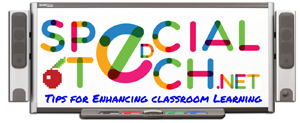Coding is not only a great career, the process itself is good for all students of any age. It teaches computational thinking, problem solving, modern literacy, collaboration, innovation, creativity, and more!
There’s a lot of free support for teachers to support this activity. When you register your class at hourofcode.com, you will receive emails with ideas, curriculum, and coding games specialized for the age/maturity range of your students. You can even get free inspirational posters to hang in your classroom!
Kelly Knight, the STEAM Coordinator at Riverside Presbyterian Day School, discussed how she gets ready for Hour of Code during an edWeb.net webinar entitled Get Ready for Hour of Code on November 7, 2017. Knight was an English major with a minor in education, so she did not start out looking to get into the sciences. But she currently runs a maker space where K-6 students come once a week.
Here are some of the resources Knight finds helpful:
Websites
- code.org (free coding games and activities)
- Hourofcode.com (free coding games and activities; provides classroom support)
- Girlswhocode.com (free coding site for 6-12 grade girls). Great for an after-school club; provides curriculum.
- Firstinspires.org (for LEGO leagues for use with Lego EV3 Mindstorms)
Apps and Software
- Scratch Jr. (for 4 to 7-year-olds). Free and great for story telling.
- Scratch (for ages 8+) Free and great for games, story telling. Knight had students use Scratch with Makey Makey to set up a model of food moving through the digestive system, to show the nervous system and more
- Kodable (programming basics for ages 5+). Free site which offers an entire K-5 curriculum and a series of puzzles which become more complicated as the user advances; ends with teaching Javascript.
- The Foos/codeSpark Academy (all ages — students write code to solve puzzles). It’s not completely free but is very popular. They generally offers special sales for schools and there are some free activities until January 15, 2018.
Tools
- MaKey MaKey: An amazing tool to use with Scratch that turns anything conductive into a keyboard. Knight attaches aluminum foil to objects to create the conductive path. Inquire about educational discounts for teachers.
- littleBits: These are magnetic blocks that teach circuitry, and which now have a code kit. They teach sequencing. Knight’s 3rd grade students used them to make a light-activated alarm clock. They include easy-to-use apps which guide children through first coding projects. The four main inventions are Rock Star Guitar, Hot Potato of Doom, Ultimate Shootout, and Tug of War. Knight’s students really enjoy these. The apps are free and some of the classroom kits cost about $300.
- Sphero. This is an app-enabled Bluetooth robotic ball, which kids can control with their tablets. Kids can start out with block coding and end up learning Javascript. In one class, Knight taught erosion by having the Spheros act as waves, causing foam “rocks’ to fall into the ocean. Knight found them to be durable, waterproof, and easy to use. There are leveled coding opportunities, premade curriculum, and a community which supports use. Knight used Sphero 2.0 with 1st graders, but it could also be used with high school students. Sphero 2.0 costs about $130 but there’s also a Sphero Mini for about $50.
- KIBO: For Pre-K through 3rd graders, Knight uses KIBO, which is a robot kit which does not need an iPad or other technology to get it to work. The children use code to direct the movement of the robot. Knight found it tactile and relatible, and useful for storytelling, especially since it includes a voice recorder and motion sensor. KIBO was created by Marina Umaschi Bers, who wrote Coding as a Playground, which contains a lot of good information about the benefits of coding. KIBO kits cost between $230 and $500.
- LEGO WeDO – (App is free; kit costs $175 — lessons based on science standards. Children work in groups and app shows them what to do. step by step using block programming).
- LEGO EV3 Mindstorms — (for 9- to 12-year-olds. Children use robots to solve different challenges). The classroom kit costs about $390.

